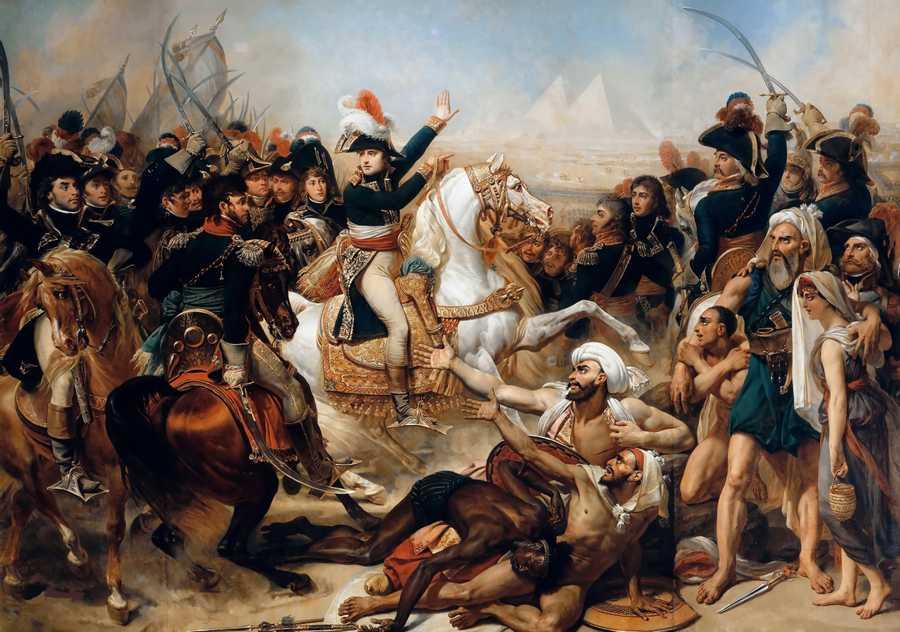Learn more about communication with this collection
How to set achievable goals
How to create and stick to a schedule
How to break down large projects into smaller manageable tasks
Ancient Egypt and hieroglyphs
Ancient Egypt has exerted power of influence on the world of learning for over two millennia.
The Greek historian Herodotus identified the pyramids at Giza as places of royal burial, but his works did not help 19th Century scholars in understanding ancient Egyptian writing. Greek and Roman writers could not read hieroglyphs either.
26
317 reads
Ancient Egypt: How the language fell in disuse
- Ancient Egypt was conquered, first by Persians, then by Macedonian Greeks under Alexander the Great in 332BC.
- The Ptolematic dynasty, named after Alexander's general, Ptolemy I, ruled Egypt for three centuries. It ended with the death of Cleopatra VII and the Roman occupation in 30BC.
- From AD 395, Egypt was ruled first by Coptic Christians, then by Muslims, until the time of Napoleon.
- Spoken Coptic descended from the language of ancient Egypt, but written Coptic was entirely alphabetic, like Greek. Still, the Coptic language provided approximate pronunciation for hieroglyphs.
23
173 reads
An attempt at understanding hieroglyphs
Greek and Roman authors thought that hieroglyphs were symbols of ancient Egyptian wisdom. They dismissed any phonetic component in the hieroglyphs.
This misguided view of hieroglyphs as 'picture writing' obscured any attempt at deciphering it. Near the 18th Century, Danish scholar Georg Zoëga thought that some hieroglyphs might be phonetic signs.
22
132 reads
The turning point in understanding hieroglyphs
- In 1798, Napoleon Bonaparte invaded Egypt. Military engineers discovered the Rosetta Stone in July 1799 while rebuilding an old fort in the Nile Delta.
- It was clear that the bottom inscription on the Rosetta Stone was written in the Greek alphabet and the top part in Egyptian hieroglyphs.
- In the middle was a script about which little was known. Today we know this scripts as a cursive form of ancient Egyptian writing.
25
123 reads
Hieroglyphs: breaking the code
- In 1802, a French and a Swedish scholar used similar techniques to unravel the text. They searched for the name Ptolemy, by isolating repeated groups of symbols in about the same position as the Greek inscription.
- They drew up a tentative alphabet and applied it to the rest of the inscription. Other words such as 'Greek', 'Egypt', and 'temple' could be identified. But the demotic text (a cursive form of hieroglyphs) was not an alphabet, nor completely unrelated to hieroglyphic.
- In 1815, an English scientist and polymath, Thomas Young, traced how the pictographic hieroglyphs, showing people, animals, plants and other objects, had developed into their abstract, cursive equivalents in demotic. Young concluded that demotic consisted of a mixture between hieroglyphics and letters of the alphabet.
23
110 reads
The name of Cleopatra: A crucial clue in understanding hieroglyphs
In 1822, Jean-François Champollion found an essential clue from the newly discovered cartouche (oval rings enclosing certain groups of hieroglyphs, generally names and titles) containing the name of Cleopatra. The alphabet was now mostly correct and allowed him to translate the names of dozens of rulers.
When Tutankhamun's cartouche was discovered in 1922 and deciphered, it turned out that the "chick" pictogram was phonetic for the vowel 'u', the 'shepherd's crook' was a symbol meaning 'ruler. This was the turn of uncovering the secrets of a great civilisation.
23
104 reads
CURATED BY
Problem solver. Award-winning reader. Devoted food geek. Certified travel evangelist. Incurable explorer.
More like this
3 ideas
Centers of Progress, Pt. 33: Memphis (Medicine) - HumanProgress
humanprogress.org
2 ideas
Eratosthenes - Wikipedia
en.wikipedia.org
8 ideas
8 Legendary Ancient Libraries
history.com
Read & Learn
20x Faster
without
deepstash
with
deepstash
with
deepstash
Access to 200,000+ ideas
—
Access to the mobile app
—
Unlimited idea saving & library
—
—
Unlimited history
—
—
Unlimited listening to ideas
—
—
Downloading & offline access
—
—
Personalized recommendations
—
—
Supercharge your mind with one idea per day
Enter your email and spend 1 minute every day to learn something new.
I agree to receive email updates

